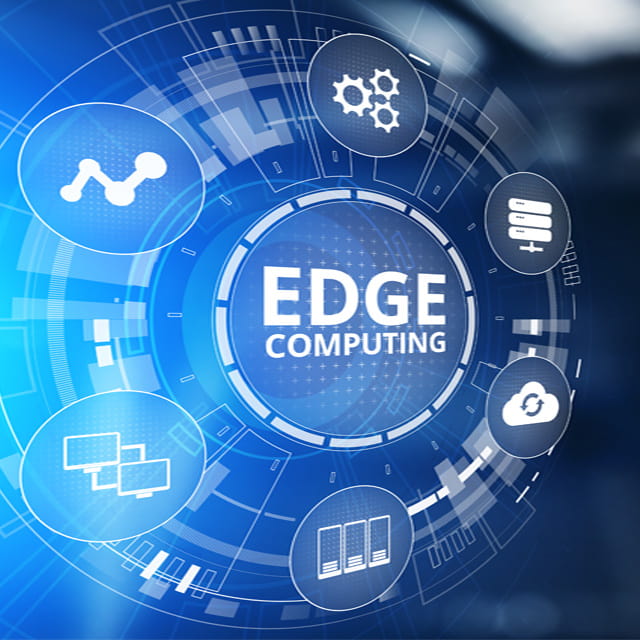What is Edge AI? Five Essential Conditions for Edge AI Power Supply!

Author: FSP Group
Introduction
In an era where edge computing and deep learning technologies are rapidly advancing, Edge AI is becoming a key driver of industrial upgrades and intelligent transformation. By processing data in real time on end devices, Edge AI significantly reduces response time and latency while decreasing reliance on cloud services. Its applications span manufacturing, healthcare, retail, smart cities, and more. In the future, the smartphones, laptops, and IoT devices we use daily will fully incorporate Edge AI acceleration and AI power technologies, delivering more efficient and intelligent user experiences. To ensure the stable operation of these AI-enabled devices, the design of Edge AI power supplies has become critically important.
In this article, we will explore what Edge AI is, how its core technologies support edge computing, and the five essential requirements for power supplies designed specifically for Edge AI devices. Whether you are building a smart factory, deploying edge AI systems, or working as a power design engineer, this comprehensive guide will help you better understand the importance and future direction of Edge AI.
What is Edge AI? How Does It Differ from Traditional Artificial Intelligence (AI)?
Edge AI, also known as "Edge AI," is currently widely used in industries such as industrial, medical, smart living, and green energy. As AI technology continues to evolve, it will gradually be integrated into various consumer electronic products we use daily. Traditional AI applications typically involve data centers with powerful servers that users access via network connections. However, this centralized approach can face privacy issues and latency problems due to network dependencies.
Edge AI allows users to utilize computing power and AI models at the edge without requiring an internet connection, offering more flexible applications and providing timely responses on end devices. By processing and analyzing data directly on end devices, the performance requirements of these devices become more critical. The power supply for Edge AI-equipped devices must meet high standards in energy efficiency, stability, reliability, and lightweight hardware design.
Core Technologies of Edge AI
Since Edge AI requires integrating AI models into small end devices, it involves all the training processes of current AI technologies, including machine learning (ML), deep learning, and compressing models and training data to fit limited end storage systems. Once integrated into end devices, suitable Edge AI power is essential to ensure uninterrupted operation.
Machine Learning (ML)
Machine learning is the foundation of Edge AI, enabling devices to learn and predict based on collected data. For example, in retail, stores can use Edge AI devices to understand customer preferences in real time and deliver customized advertisements. Reliable real-time customer data collection at the local level reduces the risk of data breaches.
Deep Learning
In Edge AI, deep learning simulates human brain connections to create an understanding of images. As AI encounters new images, it adjusts connections between layers, allowing edge devices to reliably identify objects. Traditional deep learning can quickly and effectively analyze target images, but industrial automation applications are generally less complex. Combining deep learning with edge devices provides cost-effective and efficient training for Edge AI equipment.
Model Compression
Edge devices usually have limited computing resources and storage capacity, necessitating model compression techniques like quantization, pruning, and quantization-aware training. Model compression reduces the computational load, enabling models to run on embedded devices with limited capabilities, improving inference speed and reducing energy consumption.
Hardware Accelerators
Executing deep learning models efficiently on edge devices requires specialized hardware accelerators. Optimized model architectures and hardware accelerators fully utilize limited computing and storage resources, such as:
- Graphics Processing Units (GPUs): Optimize deep learning algorithms, executing matrix operations and deep learning tasks swiftly.
- Tensor Processing Units (TPUs): Designed for efficient deep learning inference, offering excellent energy efficiency and performance.
- Vision Processing Units (VPUs): Optimize hardware accelerators for vision processing applications, commonly used in image processing and machine vision tasks.
Sensor Technology and Data Processing
Edge AI collects vast amounts of data from sensors or embedded devices, crucial in fields like autonomous driving and industrial automation to ensure operational safety. When edge computing devices are implemented in offline systems or robots, ML and deep learning models deployed on edge devices handle inference functions in embedded systems.
Applications of Edge AI
Edge AI has a broad range of current and future applications, including:
- Smart Homes: Household appliances like air conditioning systems and various power devices can integrate Edge AI. Sensors and Edge AI in home power devices or small storage units can monitor energy usage in real-time, improving safety.
- Healthcare: Combining Edge AI with medical devices enhances the accuracy, immediacy, and convenience of remote medical care. For instance, Israeli company Tyto Care's AI algorithm for detecting abnormal breathing received FDA approval last year. Integrating this AI model with edge devices allows at-risk groups to receive remote consultations with confidence. Wearable health tracking devices can also integrate Edge AI, analyzing real-time health data and providing timely advice.
- Engineering and Manufacturing: Edge AI is already used in various industrial scenarios, including robotic arms and equipment performance prediction tools. Integrating Edge AI into existing equipment enables preemptive analysis of current performance, preventing emergencies and enhancing user safety. Automobile manufacturers, for example, use Edge AI and sensors on production lines to ensure safety by detecting defects in small components.
- Security and Surveillance: Tech giant Amazon offers the Ring smart doorbell system, combining edge devices with drone technology for comprehensive home security monitoring. In case of emergencies like accidents or fires, the system can autonomously alert relevant safety units for immediate assistance.
Five Essential Conditions for Edge AI Power
To ensure reliable operation in edge environments and meet performance requirements, the importance of Edge AI power (power supply) cannot be overstated. Here are the five key elements for Edge AI power:
Edge AI Power Key Point 1: Stability and Reliability
Edge AI power needs to provide stable voltage and current, ensuring stable operation under varying workloads. High reliability is crucial to prevent system downtime caused by power supply failures.
Edge AI Power Key Point 2: Energy Efficiency
Edge AI power should be as efficient as possible to minimize energy waste and extend battery life.
Edge AI Power Key Point 3: Adaptability
Given that workloads in Edge AI applications may fluctuate, the power supply should be adaptable, able to adjust output voltage and current according to system demands.
Edge AI Power Key Point 4: Miniaturization and Lightweight Design
Since Edge AI systems are often deployed in space-constrained devices, Edge AI power should feature compact and lightweight designs.
Edge AI Power Key Point 5: Electromagnetic Compatibility (EMC)
Edge AI power should comply with electromagnetic compatibility (EMC) standards to reduce electromagnetic interference, ensuring normal operation with other equipment and adherence to relevant regulations.
FSP - Edge AI Power Supply Solutions
FSP has extensive experience in developing high-performance power supply products. Although power supplies are highly mature products, they must balance cost, reliability, stability, and system compatibility in various end-use fields. The company has several corresponding products for edge computing and edge servers in the medical, commercial, and industrial fields and can provide high-wattage power supplies for customized needs. For example, in the medical field, the company can provide power solutions tailored to the wattage requirements of different equipment.
Industrial Applications
As the era of Factory Automation 4.0 advances, traditional manufacturing industries are increasing the proportion of factory automation equipment. Through edge computing technology, combined with sensors, IoT devices, and related equipment, factories can achieve real-time monitoring of their facilities. FSP can provide highly reliable and diversified edge computing power products, enabling companies to upgrade supply chain management and achieve real-time inventory management.
In addition to the commercial, medical, and industrial fields, FSP also provides high-standard smart microgrid applications, gaming power supplies for end consumers, and uninterruptible power systems (UPS). The company currently offers multiple customized solutions for customers in various fields. For further inquiries, please visit the company's official website.
Know more about edge computing applications
Related Articles
About FSP
FSP Group is one of the global leading power supply manufacturer. Since 1993, FSP Group has followed the management conception “service, profession, and innovation” to fulfill its responsibilities as a green energy resolution supplier.





